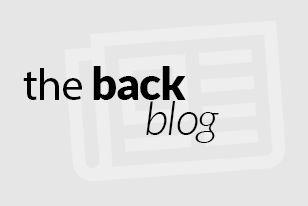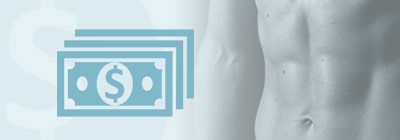- Discontinue any medications/supplements which can tend to increase swelling and bruising for 2 weeks before and for 2 weeks after your procedure. Check with your doctor for a more complete list but you should completely avoid such commonly used and seemingly innocent (they’re not!) medications/supplements as Motrin, Advil, Aspirin and Fish Oil.
- No smoking/tobacco products for 2-4 weeks before any procedure and for 2-4 weeks after any procedure. Nicotine in the system constricts the tiny blood vessels that your body counts on for healing. The blood flow can become overly restricted, forcing freshly operated upon critical zones, now in need of extra oxygen and nutrients, to struggle to survive. That is a recipe for poor healing, higher infection rates, bad scars, or much, much worse. Smoking adversely affects lung function and will likely interfere with how well your anesthesia can work and how smoothly you will “wake up”. Smoking will also generally prolong the recovery from the anesthesia alone. And coughing and hacking – as most smokers often do when “emerging” from anesthesia – immediately following any procedure (especially one that involved your chest or abdomen!) can pull or tear things that have not had any chance to even begin their healing yet! The swings in blood pressure that accompany this type of coughing also tends to promote more swelling, bruising, drainage or bleeding than would be experienced otherwise.
- Consuming yogurt on a daily basis will help to restore a more normal balance of beneficial bacteria (and better bowel function) for your gastrointestinal tract. Acidophilus capsules are a suitable alternative to yogurt. Start one week before and continue for 1-2 weeks after your procedure. A most unwelcome side effect of antibiotics is the change in the make-up of the normal, healthy intestinal bacterial balance that then allows more harmful bacteria access. This is why so many antibiotics can cause GI distress and diarrhea. Yogurt helps to maintain and replenish that important balance. The GI disturbances associated with surgery and antibiotics can become quite serious and very aggressive necessitating hospitalization or even emergency surgery! The simple use of yogurt is proving to be one of the most important and reliable measures we know that can serve to protect you against this dreaded but not all that rare complication known as “Clostridial Enterocolitis”. This is a very severe and dangerous form of antibiotic-associated colitis that can follow the routine administration of peri-operative antibiotics which are designed to protect you from infection!
- Maximize hydration with 8-12 full (8oz.) glasses of a complex liquid (not water) per day (e.g. Gatorade, fruit juice). Coffee or tea is acceptable to drink but does not count as a glass. You must hydrate well even if you have minimal or no appetite. If you are nauseated or vomiting to such an extent that you are unable to hydrate properly, that is very dangerous. Call your doctor – that is a level of nausea or vomiting which will have to be treated, and fast! Your recovering body needs extra fluids, sugar, electrolytes and minerals to heal and function properly. Having less than you would have under even normal circumstances is asking for trouble and poor results. Wound healing, lung function, blood circulation, bowel activity, even the prevention of dangerous blood clots in the legs depends upon good post-op hydration. Water itself is not a great choice – although it supplies much needed fluid, water can “dilute” the already possibly lower levels of electrolytes (like sodium and potassium) in the blood stream, actually causing increased dizziness or nausea as a result!
- Stay out of bed other than when going to sleep for the night. Small, brief, shuffling walks about the house throughout the day improve your circulation and decrease risk for blood clots in the legs. If you have to sit, do so with the legs elevated, not “hanging down” which increases the risk for forming blood clots in the calves. “Under – doing” it can be dangerous but you should rest when you need to.Listen to your body, but generally try to stay moderately active. Increase your activity as much as you can (while staying within the limits of any aftercare restrictions) as your recovery progresses.
- But don’t “over-do” it either! Just because you feel good enough to “do everything” or are having less pain than you anticipated doesn’t mean your wounds and surgical areas are as ready as you are! Many problems and complications seem to develop in a split second that is often later described by “I was feeling great and didn’t think it would be a problem to do “x” then suddenly, I felt a sharp pain and…”! Think of a good recovery like driving the speed limit. You want to hit a speed of a nice 35 – 40 miles an hour. You will be much more likely to have an accident if you drive over 100 mph, even if you are doing everything else right.
- Force yourself to take frequent, deep, slow, lung-filling, chest-expanding breaths which you let out slowly. 1 or 2 breaths like this every 15 minutes for the first 3 or 4 days after your surgery is better for your healing (better oxygenation) and your overall lung function,too. Getting your lungs back on track quickly and working again like they are supposed to is not necessarily “automatic”. Anesthesia can take a while to be fully out of the lungs – you don’t want that stuff around in there anymore once you’re out of the operating room. The better and more you “ventilate”, the quicker it gets out of your system. Even so, anesthesia’s effects on the lungs can last for days, making the breath rate slower and breath volumes too shallow – a set-up for developing pneumonia or bronchitis, even in the healthy, non-smoker. If you’ve had a procedure involving your chest, taking deep breaths might be a bit more of a challenge but it is no less important. Sometimes pain pills are about controlling pain, sometimes they are about enabling you to do the things you need to do to have a good recovery – like taking a deep breath even though it hurts.
- Gradually try to add some extra protein (to support healing) and fiber (to prevent constipation) to your diet after surgery. Good extra protein sources: chicken, turkey, fish, beef, or “protein drinks”. Good extra fiber sources: fruits, vegetables, salads.
- Limit stress as much as possible. Listen to soothing music and watch relaxing television programs. Surround yourself with supportive family members and friends. Limit your phone conversations and stressful situations as much as possible. Do not make attempts to address any important business or personal decisions.
- Don’t assume or guess about anything involving your recovery. Whether you think it is a small question or big, it’s safer to call your doctor sooner rather than later if there’s any question or concern.
- Follow all the specific recommendations your doctor has provided regarding the “do’s & don’t’s” associated with your procedure. Proper, uncomplicated healing is something we all want, but it is also the best foundation for what will hopefully be a satisfying experience and nice end result.
Dr. Lyle Back is originally from New York City, receiving his medical and surgical training at Rutgers Medical School, Cooper Hospital – University Medical Center, and Ohio State. He is Board Certified in General Surgery (ABS) and Plastic Surgery (ABPS). He is a Fellow of the American College of Surgeons (ACS), the American Academy of Cosmetic Surgery (AACS), and a longstanding member of the premier American Society of Plastic Surgeons (ASPS). He served as a Professor of Plastic Surgery at Temple University and St. Christopher’s Hospital for Children and performed reconstructive surgery with “Operation Smile” in Vietnam. He specializes in the full range of the most modern and state of the art cosmetic surgery procedures for the body and non-surgical cosmetic enhancement techniques available today.


